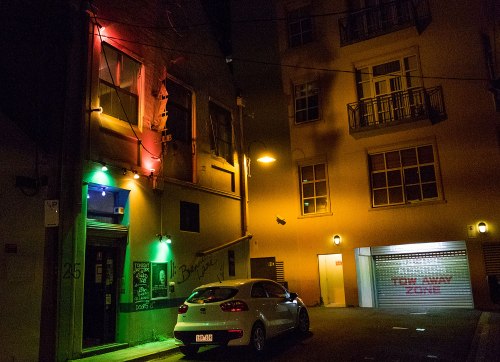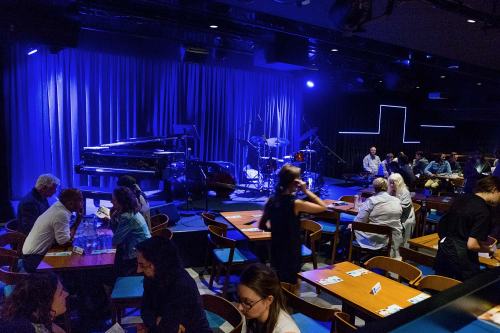The Jazzlab, 27 Leslie Street, Brunswick
I have a soft spot for nostalgia. I cling on to the familiar. In the jazz scene this year there have been some momentous changes, and I find it all too easy to wish things could stay as they have been.
When Adrian Jackson parted ways with Stonnington’s annual festival of Australian jazz, handing the artistic direction to a committee, I felt the resulting program had lost focus and lacked that special frisson that had been there when performers were brought together in unexpected and exciting combinations.
This year Adrian announced that he would not be retaining that role with the Wangaratta Festival of Jazz and Blues. Along with many musicians and fans of this wonderful weekend gathering, I deeply regretted this change and pined for a return to the status quo — a return, if you like, to the security of knowing that whatever budget constraints would assail the festival, there would still be the excitement of the unexpected.
Yet, also along with many diehard fans and musicians I suspect, the dawning realisation that Wangaratta in 2017 would be minus AJ (at least in his artistic director role) was tempered by the news that the festival’s “Programming Team” would include Melbourne’s Adam Simmons and SIMA’s Zoe Hauptmann. They have big shoes to fill, but their creativity and dedication to improvised music is undeniable. The unexpected, we hope, can be expected.
In Melbourne, the Lazarus-like and, yes, iconic jazz venue Bennetts Lane closed its doors for the last time on February. When it closed for the first time I was overseas, but I heard that the farewell party then was a humdinger.This year’s closure was a relatively quiet affair. As I left this wonderfully welcoming repository of live music, Megan Evans mentioned there were old posters by the door. I took home a large image of pianist Tim Stevens, which was a comfort.
My nostalgia and sense of loss was tempered by a few factors. Again change could not be arrested. And I was reminded of trumpah aficionado extraordinaire Scott Tinkler‘s blunt exhortation after Bennetts closed the first time: Get over it, there are many other venues for live, improvised music — Sonny’s Uptown Jazz Cafe, Paris Cat, The Brunswick Green, Lebowskis, 303 Northcote, Bar Open’s Make It Up Club, Bella Union to name just a few.
As well, we knew that new venues were on the way. Meg would be carrying the Bennetts Lane torch forward into a new city venue owned by David Marriner, at a date to be announced, but not early enough for this year’s Melbourne International Jazz Festival.
And — we finally get to the point of this post — Michael Tortoni would be opening a new haunt for music hangs in a well-tuned warehouse in Leslie Street, Brunswick. Conveniently for Michael, artistic director of the MIJF, The Jazzlab will open in time to be one of the festival venues. The icing on the cake — though he hardly fits that description — is that our much-loved Jeremy Jankie of Bennetts Lane fame will be behind the bar at The Jazzlab.I had a preview of this venue this week and all the signs are auspicious. It has the feel of the small room at Bennetts Lane (great feel, great acoustics) only larger.
Better still, my nostalgia can have free rein. The chairs are familiar. The tables are familiar. The wall clock is familiar. The stools are familiar (although much more comfortable now that they have been reupholstered). And the format is familiar. Patrons will be able find the bar with ease.
And what of the staircase, a valuable haunt at Bennetts Lane for photographers who wanted an elevated vantage point in a crowded room? Well, The Jazzlab’s stairs are much nicer, but I’m sceptical about photographers using them — we’d be on centre stage and under lights.
Expect musicians to descend the stairs, but don’t ask what they were doing up there. It’s hush hush.
Outside Tortoni’s warehouse Jazzlab there are signs of what’s to come. An acoustic bass appears on a nearby corner and a violinist sits atop the building.
Inside, behind the familiar tables, chairs and stools, there will be standing room. And that’s where you come in.
It’s “Doors 8pm, Music 9pm” for Fem Belling‘s quartet on Friday 7 April, followed by The Rookies from midnight.
Roger Mitchell




































